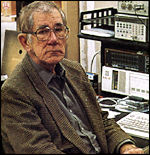Out of curiosity, what kind of corrections are required on the DSP processing end to get the orderly frequency and impulse response? Seems like it could take quite a bit to hammer out the messiness and all of the room modes in both the frequency and time domain, but I guess if you have capable speakers and plenty of power on tap its an academic discussion.
If we separate the room from the speakers, then ideally one may want the impulse response to be ideal.
Usually that is direct path and no time accounting for wall bounces.
For instance a piano in a dead room and a piano in a bright room both sound like pianos… Just one sounds like it is in a dead room, and the other a bright room.
So that is often FIR based for impulse response and maybe Dirac Live.
Whether you treat the room, or do some room EQ, then that is only amplitude based cutting of peaks.
Ideally the speaker is levelled to be flat in the direct path, and one ignores the bounces.

